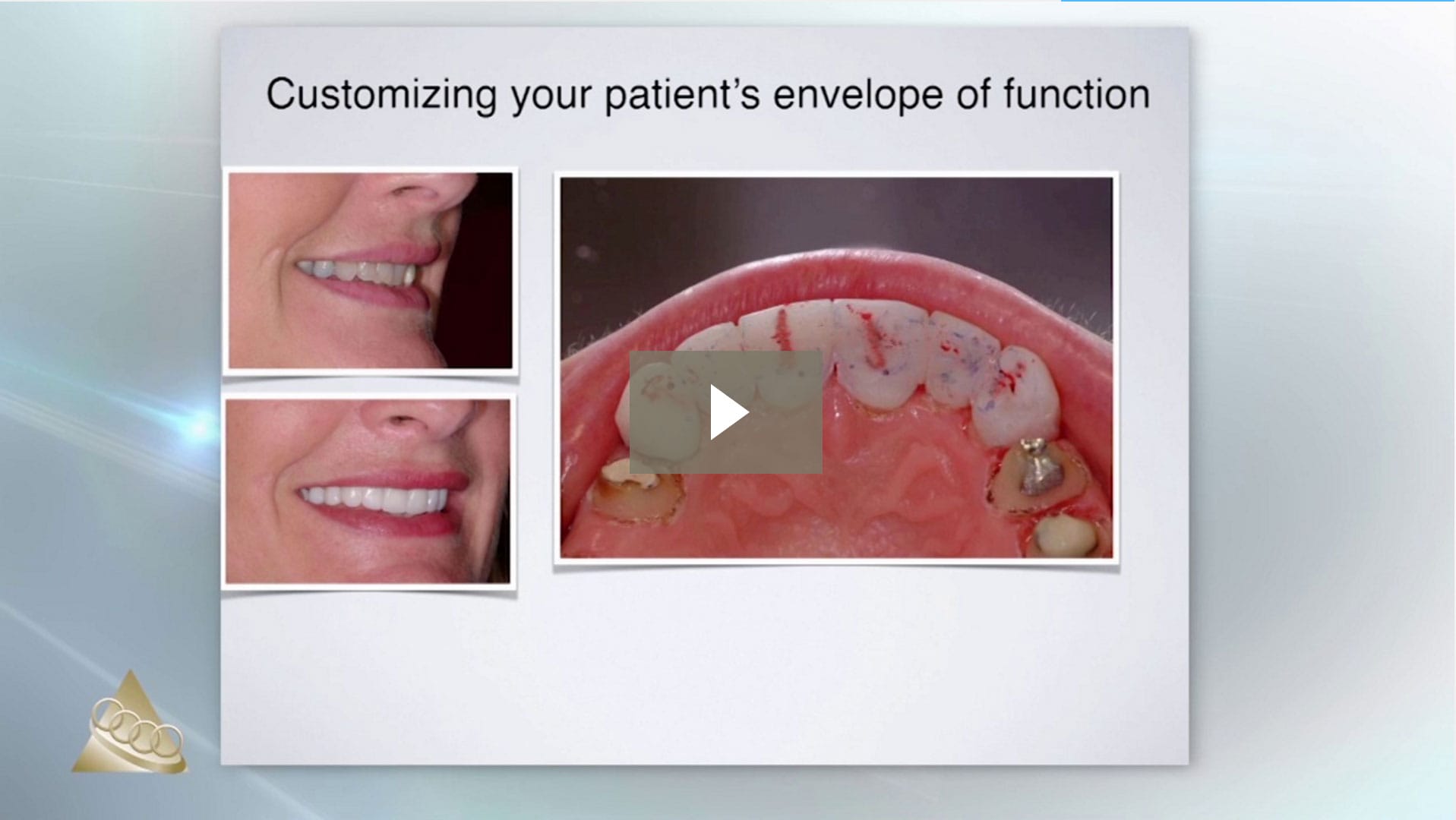
Dawson Quick Tips: Customizing The Envelope of Function
 Hello, everybody. Welcome to Quick Tips. In this edition, we’re going to be talking about customizing your patient’s envelope of function, which is a very important part of getting the anterior guidance right for your patients.
Hello, everybody. Welcome to Quick Tips. In this edition, we’re going to be talking about customizing your patient’s envelope of function, which is a very important part of getting the anterior guidance right for your patients.
As you’re looking at the lingual contour of provisional restorations, hopefully you are developing lines on your provisionals that provide evidence of posterior disclusion or anterior guidance.
Remember, if you don’t get anterior guidance or posterior disclusion, then that is going to allow the back teeth to rub.
And if the back teeth rub, then we know that increases muscle activity and can create damage to the teeth, either by working them loose or by causing the teeth to wear. And make no mistake, a lot of the fractures we see are related to not having good anterior guidance or posterior disclusion.
But the question is, can we make the guidance too steep?
When the patient starts chewing and speaking and the mandible starts moving outside-in, is it possible to get those lines too steep so it’s actually in the way of the functional path that the lower incisors travel outside-in?
Transcription continued below.
The quick tip today is that after we get our centric stop and work out our guidance, we want to always check these anterior teeth in what Dr. Dawson calls long centric.
In other words, we bring the patient from laying back to a sitting up position, lean them forward slightly and just have them bite. If the lingual contour is in the way of how that patient naturally chews or speaks, you’re going to see red marks in front of your black marks. This is that long centric movement. What we don’t want is that lower incisor having the ability to touch any part of the lingual contour as they chew back to their centric style. If red marks are there, we’re simply going to adjust the red marks and leave the black marks alone, and in essence customize this lingual contour.
This is something we go over very specifically in both Core 1, Core 5 and our Core 6 classes at the Dawson Academy. And I will tell you, out of all the things that we teach you, this may be one of the most important things with regards to creating functionally correct, stable and beautiful anterior restorations. So with that, I want you to be thinking about that fact as you go through our four steps to predictable success, that the provisional prototypes working out the precise esthetic and functional parameters are absolute key to having properly contoured definitive restorations.
So, I hope that helps. Pay close attention to that ligual contour. And if you do, I think you’ll find that your patients will be a lot more happy and your restorations will be lasting a lot longer. Hope this quick tip helps and we look forward to seeing you next time. Thanks.









Leave a Reply
Want to join the discussion?Feel free to contribute!